Impact of Typhoon "Mangkhut" on Curtain Walls of Buildings in Hong Kong, Shenzhen and Guangdong (IV) — — Cause Analysis and Experience Summary of Damage to Doors and Windows
In the previous article, we described the types and possible causes of damage to building curtain walls in typhoons. In this issue, we describe the types and possible causes of damage to doors and windows in typhoons, and summarize the impact of Typhoon Mangkhut on building facades. The contents are as follows:
The types of damage to doors and windows during the typhoon are classified as follows:
1.Separation of sliding window sash
2.Arris defect of side-hung window
3.Falling of window sash glass
4.Broken window glass
Analysis of the causes of damage to building doors and windows in typhoon:
1.Cause analysis of falling of sliding window sash from sliding rail


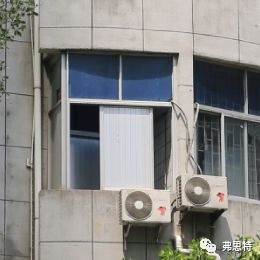
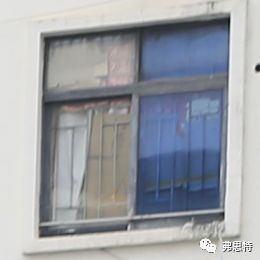
▲ Photos of sliding window sash falling after typhoon
(1) Insufficient overlapping size of frame and sash: The specification requires that the overlapping amount of sash and frame of sliding doors and windows shall meet the design requirements. According to the requirements in Introduction to Technical Specification for Aluminum Alloy Doors and Windows Engineering in Jiangsu Province (DGJ32/J07-2009), after the installation of sliding doors and windows, the measured value of overlapping amount of window frame and sash shall not be less than 6mm, and the measured value of overlapping amount of door frame and leaf shall not be less than 8mm. In strong typhoons, insufficient overlapping of sash can easily cause derailment of sliding sash, resulting in economic losses and endangering the personal safety of pedestrians.
(2) Loss of anti-drop block: The Technical Code for Aluminum Alloy Window and Door Engineering (JGJ214-2010) mandatorily requires that sliding doors and windows must be provided with anti-drop measures. If the anti-drop block is missing, the sash can be disassembled from the outdoor side, and the sash will fall due to high wind pressure or other external factors, which poses great potential safety hazards.
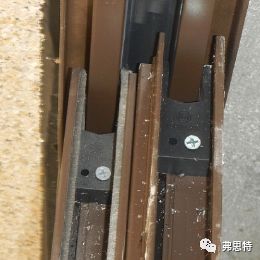
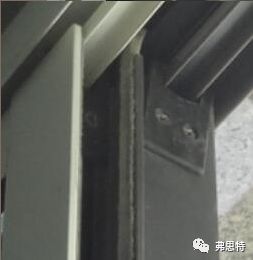
▲ Schematic diagram of anti-drop block
2.Cause analysis of arris defect of side-hung sash
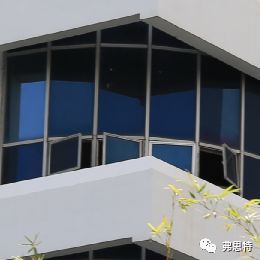
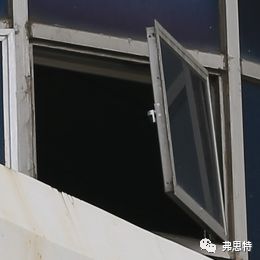
▲ Photo of arris defect of side-hung sash after typhoon
(1) The bearing capacity of the hardware did not meet the requirements. The bearing capacity of the hardware shall be selected according to the weight of the window sash multiplied by a certain coefficient and combined with the size of the window sash. After the typhoon, some obvious deformation of sliding stay was observed, which resulted in the abnormal opening and closing phenomenon.
(2) The connection strength of the hardware did not meet the requirements. As required in the specification, the fasteners used to connect the door and window frame and sash profiles shall be stainless steel, and the aluminum and aluminum alloy blind rivets shall not be used as the stress connection fasteners of the door and window components. The material, quantity and position of connectors shall meet the structural strength requirements, and the connection position shall be reinforced.
(3) The window sash that was not closed in time in case of typhoon also caused the window sash to drop or even fall. The window sash was not closed in time in case of typhoon in both office buildings and residential areas. In this regard, the property management and owners should make good publicity and preparation before the typhoon and close it in time.
3. Cause analysis of falling of window glass

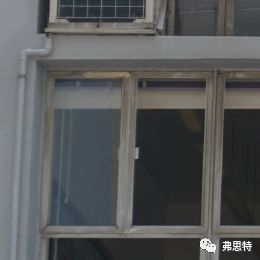
▲ Photos of glass falling after typhoon
(1) The glass trim strip was placed externally. The trim line of some projects was located at the outdoor side. The trim line and the main profile were connected by buckles and sealed with glue. In typhoon, the trim line was subject to large wind pressure, which was easy to deform or even fall off, and the glass was prone to detachment and falling. In addition, large hazard of water seepage occurred when the trim line was placed externally, and there was also anti-theft hazard in low-rise buildings. It is recommended not to adopt.
(2) The depth of glass into the groove did not meet the requirements. The current common depth of glass into the groove is 15mm. If the depth is too small to meet the requirements, it may cause the glass to shake or even fall off the groove in the typhoon.
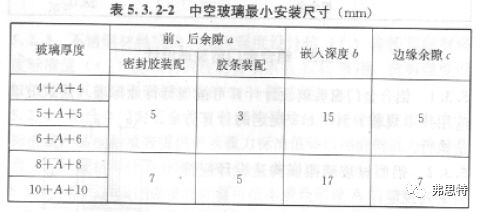
▲ The picture is taken from the Technical Code for Aluminum Alloy Window and Door Engineering JGJ214-2010.
4. Cause analysis of glass damage
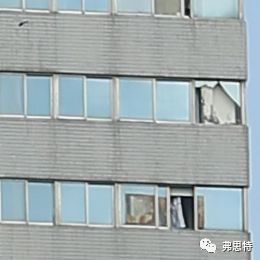
▲ Photo of glass damage after typhoon
(1) The strength and deflection of the glass shall be calculated in the design. The glass that did not meet the structural strength calculation was prone to be damaged under strong wind pressure in typhoon weather.
(2) During the design, the structural strength of the whole window shall be checked, including the corner connection strength, material selection, etc. Otherwise, in the typhoon, the materials of frame, sash and stile will be deformed and the glass will be extruded. The glass is a brittle material, which is easy to cause glass damage after being extruded.
(3) Due to small thickness of glass gluing or poor quality of gluing, the role of elastic connection could not be played. In the case of positive and negative wind pressure impact, the direct impact between glass and profile was easy to cause glass damage.
Experience summary of building doors, windows and curtain walls in typhoon-prone cities:
Based on the above analysis, we can summarize the key points that should be paid attention to in the door and window curtain wall works under extreme climatic conditions:
1. Summary of design experience:
(1) Strengthen the connection of doors, windows and curtain walls
The connection of doors, windows and curtain walls includes the connection between doors, windows and curtain walls and the main body, the connection between curtain wall rods and the connection of hardware for opening sashes of windows, doors and curtain walls. On the premise of strict design in accordance with the specification, the curtain wall rod is very unlikely to be unstable, and its safety is mainly manifested in various connection parts. Strengthening the connection is the premise of ensuring safety.
(2) Control window sash specification
In the face of frequent falling accidents of window sashes of doors, windows and curtain walls under strong wind, the size of window sashes should be controlled in design to avoid using large-sized window sashes. Strengthen the safety measures of window sash without locking, formulate corresponding product standards and test standards, and improve the safety performance and wind resistance of curtain wall window sash.
(3) Reserve sufficient safety margin
The limit state design method based on probability theory is adopted in the design of doors, windows and curtain walls. That is to say, the reliability of the structure is determined by the failure probability of the structure, and different partial coefficients are given under different conditions. These partial factors come from engineering practice and are determined by statistical probability method, so they are of practical significance. These coefficients are the probability of the structure completing the intended function within the specified time and under the specified conditions. However, we can not ignore the small probability events, such as the power of Typhoon Mangkhut, where the local instantaneous wind pressure may far exceed the standard wind pressure. The ultimate stress ratio can not be adopted in the strength checking of the design of door and window curtain wall, and sufficient safety margin should be reserved.
(4) With the help of test data
Wind tunnel tests are usually done in the design of super high-rise buildings or complex buildings, and the wind pressure values are corrected according to the test data. However, for general high-rise buildings, narrow passages will be formed between buildings. When strong wind passes through the passages, the wind speed will increase sharply, resulting in negative wind pressure exceeding the normal wind pressure value, which will cause unexpected damage to the curtain wall. Therefore, wind pressure data obtained from wind tunnel tests should also be used to assist curtain wall design for intensive buildings in typhoon-prone areas.
2. Experience summary of material selection
(1) In typhoon-prone areas, laminated glass, homogeneous tempered glass or ultra-white glass should be used for glass curtain wall, and the use of tempered glass should conform to the provisions of the specification. The configuration of laminated hollow glass is preferred.
(2) In typhoon-prone areas, the wind load bearing capacity of the structure must be strictly calculated, and the corresponding calculation sheet must be provided in the design of the lock point lock seat.
3. Summary of construction experience
The construction shall be carried out in strict accordance with the design requirements and the process specified in the specifications, and the quality supervision of the construction process shall be strengthened.
4. Summary of maintenance experience in use
The property management should increase the routine inspection of whether all the opening sash are closed before the typhoon in the daily management code of conduct, and check and repair the damage of the opening sash after the typhoon.











